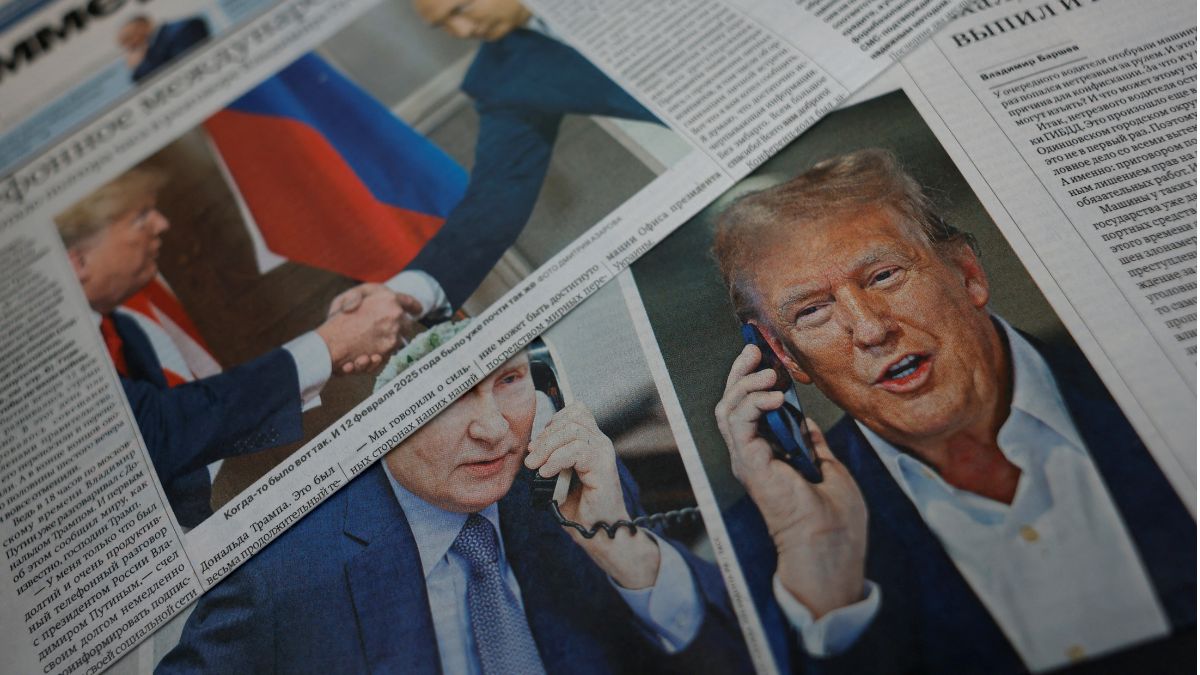US President Donald Trump has been threatening India with steep tariffs over its oil imports from Moscow even as trade data shows that the United States continues to engage in selective but significant imports from Russia — a country Washington has otherwise sought to isolate since the invasion of Ukraine in 2022.
Most recently, Trump, in a series of online statements, accused India of buying heavily discounted Russian oil and profiting by reselling it.
He threatened a hike in tariffs on Indian exports to the United States, going as far as proposing a 25 per cent duty and promising additional penalties. India reacted firmly to this public criticism.
According to a statement from the Ministry of External Affairs (MEA), India began purchasing oil from Russia only after its traditional energy suppliers diverted output to European markets post-2022.
“The United States at that time actively encouraged such imports by India for strengthening global energy markets stability,” the statement noted.
“It is revealing that the very nations criticising India are themselves indulging in trade with Russia. Unlike our case, such trade is not even a vital national compulsion.”
India has repeatedly justified its energy trade with Russia as necessary for maintaining stable and affordable energy costs for its domestic consumers.
Hardeep Singh Puri, India’s Minister of Petroleum and Natural Gas, remarked in a recent CNBC interview: “If people or countries had stopped buying at that stage, the price of oil would have gone up to 130 dollars a barrel. That was a situation in which we were advised, including by our friends in the United States, to please buy Russian oil, but within the price cap.”
Even former US Ambassador to India Eric Garcetti had stated at a public event last year that “we wanted somebody to buy Russian oil,” acknowledging Washington’s prior encouragement of Indian purchases to stabilise global markets.
The Indian government highlighted the continuing trade relationships between Russia and the United States, as well as the European Union, despite sanctions and political rhetoric.
Official data confirms that Europe and America have maintained selective imports of high-priority goods from Russia over the past few years.
European Union-Russia trade
The European Union’s trade with Russia remains substantial. The EU’s goods trade with Russia amounted to €67.5 billion ($78.1 billion) in 2024, and trade in services was worth €17.2 billion in 2023. E
uropean LNG imports from Russia hit a record 16.5 million tonnes in 2024, surpassing the previous record of 15.21 million tonnes in 2022.
Europe’s commercial interactions with Russia cover a wide range of sectors including liquefied natural gas, fertilisers, mining products, industrial chemicals, iron and steel, and transport equipment.
US-Russia trade
The United States also maintained imports from Russia, particularly in strategic areas like nuclear fuel, precious metals, and agricultural products. American imports from Russia totalled approximately $3 billion in 2024, down from $36 billion in 2021, but key items continue to flow.
According to the US International Trade Commission:
Fertilisers: $1.1 billion in 2024.
Palladium: $878 million.
Uranium: $624 million.
Aircraft engine parts: $75 million.
Trade in services, on the other hand, showed resilience. In 2024, US services exports to Russia amounted to $1.3 billion, while imports were $384 million — resulting in a services trade surplus of $873 million, a 43 per cent rise over the previous year.
From January to May 2025, US imports from Russia grew 23 per cent year-on-year to reach $2.1 billion, with palladium imports up 37 per cent, uranium up 28 per cent, and fertilizers up 21 per cent.
Even the US Trade Representative acknowledges that critical imports such as uranium and palladium are shielded from full sanctions due to the lack of viable alternatives in the global market.
A granular look at trade data reveals that the United States continues to purchase a wide range of products from Russia. These include industrial commodities, precious metals, chemicals, and agricultural items.
According to customs and trade databases, the following were among the top imports in 2024:
Fertilisers (urea, potassium chloride, and others) – $1.3 billion
Precious metals (palladium, platinum, etc.) – $878 million
Inorganic chemicals, including radioactive materials – $695.7 million
Uranium hexafluoride for nuclear fuel – $624 million
Aircraft parts and components – $75 million
Wood and wood products – $89.4 million
Machinery and reactors – $80.8 million
Animal feed, residues from food processing – $39.9 million
Base metals and cermets – $37.3 million
Iron and steel products – $13.1 million
Edible vegetables, fruits, and preparations – multiple categories totalling over $15 million
Rubbers, plastics, and chemicals – Over $10 million
Pharmaceuticals, cosmetics, and essential oils – Over $2 million
Footwear, textiles, toys, and watches – Combined total over $10 million
Aluminum, copper, and nickel – Over $28 million combined
Other miscellaneous imports – From raw hides to printed books and even live animals
Despite claims that the United States and Russia conduct minimal business today, the facts reveal that trade persists in key areas.
Also Watch:
Fertiliser imports from Russia are also on the rise. Between January and May 2025 alone, the US brought in $806 million worth — 60 per cent more than during the same period in 2021.
Uranium imports, too, were 147 per cent higher compared to early 2021, showing no signs of being phased out.
“Russia and the USA do almost no business together,” Trump had claimed. But the numbers tell a different story: trade has narrowed in scope, not vanished.
While American imports of Russian crude oil — once valued at over $17 billion in 2021 — have nearly ceased, other categories like fish, nickel, and lead have also dwindled or stopped.
Nevertheless, around 90 per cent of what the US still imports from Russia consists of just three categories: fertilizers, palladium, and uranium.
With inputs from agencies
)